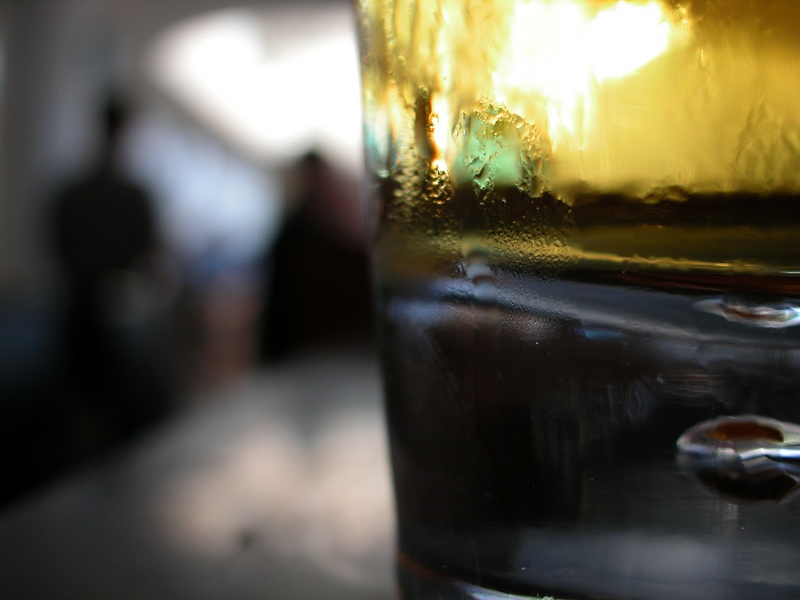
TUESDAY, Oct. 15 (HealthDay News) — Thanks to rising alcohol levels in wine and beer, the drinks served in bars and restaurants are often more potent than people realize, a new report shows.
As a result, even conscientious drinkers who stick to a strict one- or two-drink limit could easily find themselves beyond the legal limit for driving or accidentally consuming more alcohol than they want to for good health.
The National Alcohol Beverage Control Association released the new report online Tuesday.
The USDA’s Dietary Guidelines for Americans say people who drink should do so in moderation, which means one drink a day for women and up to two drinks a day for men.
The guidelines define a “drink” as 12 ounces of regular beer with 5 percent alcohol, 5 ounces of wine with 12 percent alcohol and 1.5 ounces of 80-proof spirits, which are 40 percent alcohol by volume.
Those reference sizes should shrink as the alcohol content of drinks goes up, but that often doesn’t happen, said report author William Kerr, a senior scientist with the Alcohol Research Group in Emeryville, Calif.
“A lot of the wines now are 14 percent or even 15 percent commonly, and the standard 5-ounce glass of wine doesn’t apply to that level,” Kerr said. “Really a 4-ounce glass is more appropriate.”
“And we’ve learned from our studies of bars and restaurants that the average glass is a little bit over 6 ounces,” he said.
As a result, one glass of wine may actually contain about 50 percent more alcohol than a person had bargained for.
Beer drinkers may find themselves in the same boat. A 12-ounce bottle of Bud Light beer has 4.2 percent alcohol, but the same-size bottle of Bud Light Platinum has 6 percent alcohol by volume, a nearly 50 percent increase.
“If people are thinking, ‘I can have two beers a day and that’s a healthy amount,’ that’s different if the amount is 9 percent versus 5 percent alcohol,” said Dr. Gerard Moeller, director of addiction medicine at the Virginia Commonwealth University School of Medicine, in Richmond.
It also matters whether you’re drinking a standard 12-ounce bottle, or downing draft beer in pints, which are 16 ounces each.
Flavored malt beverages and newer flavored beers are muddying the waters even further, the report showed. These drinks, which include brands such as Bacardi Silver, Smirnoff Ice, Mike’s Hard Lemonade and Four Loko, range from 5 percent to 12 percent alcohol.
Some of the more controversial varieties, like Colt 45’s fruit-flavored Blast, which is 12 percent alcohol, are not only more potent, but also packaged in 23.5-ounce cans, making one container the equivalent of an entire bottle of a similarly strong wine.
Taken together, these examples suggest that Americans need better guidance about healthy drinking, said Robert Pandina, director of the Rutgers Center of Alcohol Studies, in Piscataway, N.J.
“The dietary guidelines aren’t very useful,” said Pandina, who was not involved in the report. “They don’t parallel the drinking habits of the American public.”
So what can you do if you’re trying to moderate the amount of alcohol you drink?
In some situations, careful label reading and measuring will help ensure you don’t overdo it.
“For home drinks, you should know what you’re drinking,” report author Kerr said. “You don’t have to measure every time, but if you’re going to be drinking out of the same wine glass, measure a couple of times so you know what a standard drink looks like.”
“[At bars and restaurants], you should assume that poured drinks are more like one-and-a-half standard drinks” and maybe even more for mixed cocktails such as martinis and Long Island iced teas, he said.
If you’re ordering beer, a little homework ahead of time can help you find out how strong your preferred brand is.
Then the trick is sticking to the limit you set for yourself.
“There’s an old Native American expression, ‘A man takes a drink. A drink takes a drink. Then the drink takes the man,” Pandina said. The more you’ve had to drink, the easier it is to lose track of how much you’ve had.
Once you’ve hit your max, switch to water or something nonalcoholic to make sure you stay in control.
More information
For more about standard drink sizes, visit the U.S. National Institute on Alcohol Abuse and Alcoholism.
Copyright © 2026 HealthDay. All rights reserved.

